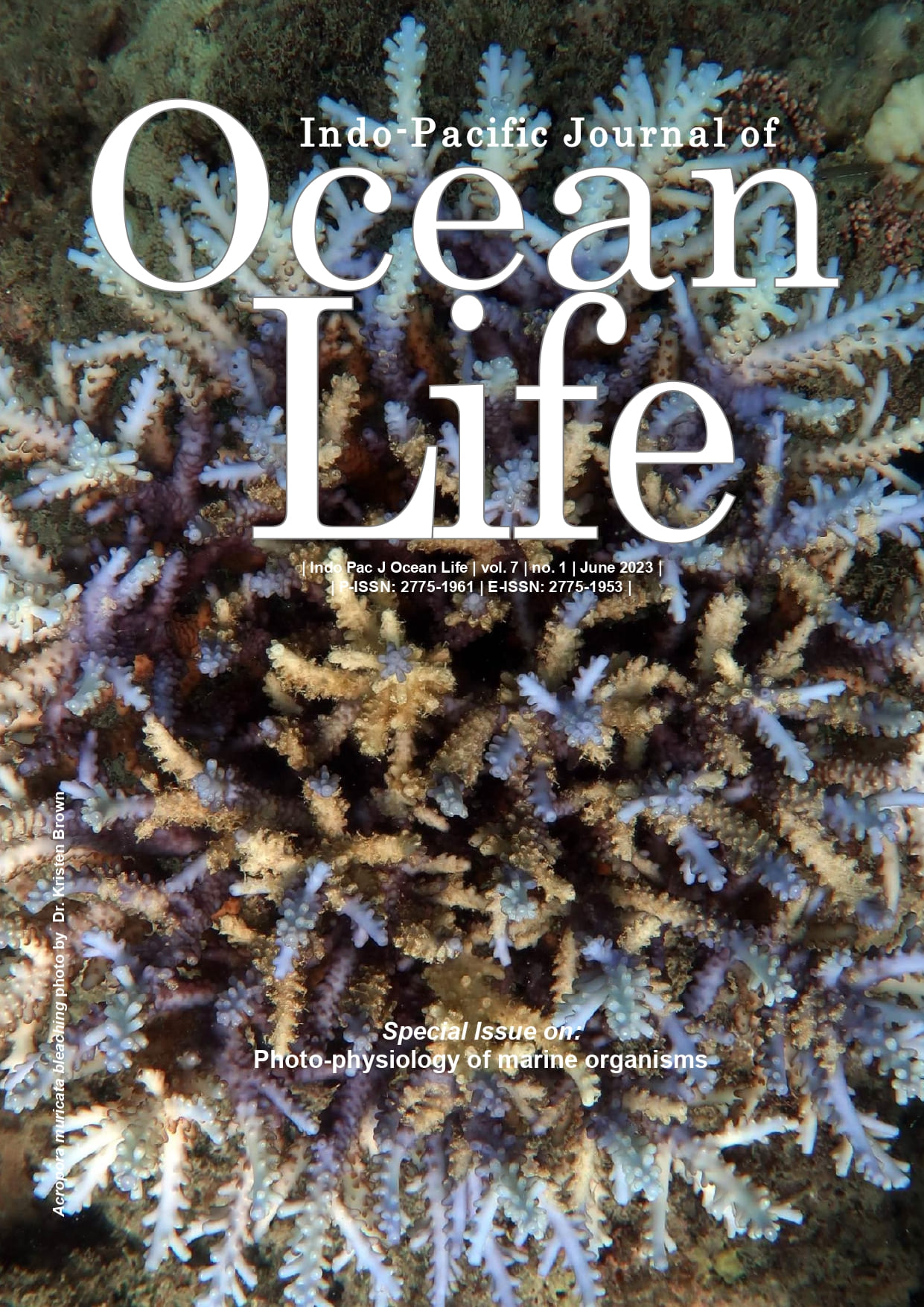Diplosoma simile (Ascidiacea: Didemnidae) distribution and its photosynthetic thermal stress responses from Mauritius: Implications for invasive or opportunistic behavior
##plugins.themes.bootstrap3.article.main##
Abstract
Abstract. Fai ALY, Kaullysing D, Jeetun S, Soondur M, Bhagooli R. 2023. Diplosoma simile (Ascidiacea: Didemnidae) distribution and its photosynthetic thermal stress responses from Mauritius: Implications for invasive or opportunistic behavior. Indo Pac J Ocean Life 7: 16-26. This study aimed to investigate the morphological identity of the ascidian Diplosoma, its distribution, experimental thermal stress responses, and its characteristics of being potentially invasive or opportunistic in Mauritian waters. The Diplosoma species were anesthetized in menthol, fixed, and preserved in a formalin-seawater solution. Isolated zooids and embryos were examined under a microscope for distinct morphological characteristics, which revealed their identity as D. simile (Sluiter, 1909). The D. simile percentage cover studied at seven sites in 2019 around Mauritius tended to be high at the near-reef zone, with a high percentage of dead coral cover per 0.5 m2. At Flic en Flac, long-term observations in 2008, 2010, 2016, and 2019 indicated a significant decrease and increased from 61.25±3.31 to 6.15±0.60 % and 0.08±0.05 to 2.50±090% for the percentage covers of live coral and D. simile, respectively. The D. simile was recorded on five coral species, and its percentage occurrence increased from 2008 to 2019 in Acropora muricata, A. cytherea, Pocillopora damicornis, and Montipora aequituberculata with the highest levels occurring in Acropora while Porites lutea was not found to be covered by D. simile during the study. Visual observations from the thermal exposures at 27ºC, 30ºC, and 33ºC during 19 hrs revealed that D. simile was more affected by increasing temperature and exposure time. Using four observed conditions of normal, bleached/paled, tissue sloughing, and mortality, D. simile suffered from only bleaching/paling at 33ºC at 19 hrs exposure. Variable visual responses were noted for corals, with P. lutea appearing normal at all trials while A. cytherea was suffering from mortality both at 30ºC and 33ºC at 19 hrs exposure. The effective quantum yield (?PSII), measured using a Diving-PAM, declined significantly at 33ºC treatments at 6 and 19 hrs of exposure. D. simile generally tended to be more thermally tolerant than corals like P. lutea, P. damicornis, M. aequituberculata, A. muricata, A, cytherea, though the ?PSII thermal responses were variable among the tested corals. When considering the reported behavioral characteristics of D. simile, namely the lack of broad dispersal range and wide environmental tolerance, it is tempting to deduce that the species is potentially invasive. However, in this study, D. simile’s significant distribution on dead corals, its presence in zones of high anthropogenic activities, and its relatively more robust thermal stress responses than corals colonized suggest an opportunistic behavior.
2017-01-01

 https://orcid.org/0000-0002-5041-4047
https://orcid.org/0000-0002-5041-4047